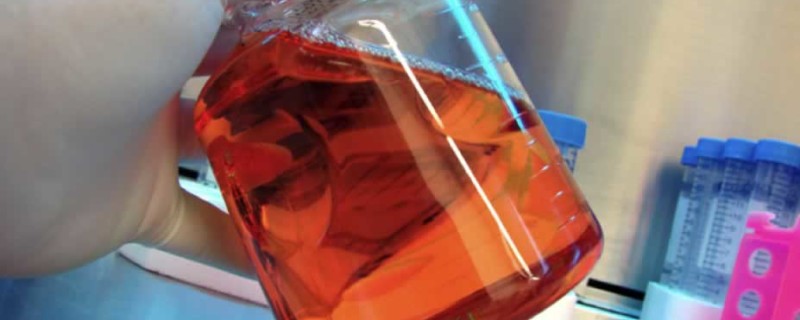
Benefits of a defined, blood-free virus production media for vero cells
Vero cells are a very popular cell line choice for virus production in vaccine manufacturing. Reasons for their popularity include a long history of safety and successful proliferation in variety of vessel types including flasks, cell factories, and microcarriers in bioreactors. However vero cells are adherent cells and must be supported in attachment with a robust virus production media to ensure good growth and productivity.
Traditionally, robust Vero media has included serum or animal-derived components. However, the vaccine industry is now moving toward serum-free media for Vero cell culture and vaccine production. Using media formulated without serum or animal /human components reduces risk of contamination with adventitious agents, streamlines regulatory documentation, and can increase consistency in culture.
Blood-free Media Development
In this mini-webinar and accompanying article, Randall Alfano, Ph.D., Vice President, Product Development, InVitria discusses the benefits of fully defined, blood-free virus production media. Data is presented demonstrating the use of this medium, OptiVERO, for virus production in vero cells.
Dr. Alfano begins the webinar by explaining how InVitria has used its proprietary, non-mammalian based production system to produce recombinant proteins important to cell culture, specifically recombinant human albumin and recombinant human transferrin. InVitria has utilized these two proteins to create defined, animal-component free, cell culture media formulations for production and Cell Therapy cell lines. InVitria has termed this media “blood-free” because it contains no blood proteins sourced from animals, including humans. Blood-free media can aid in streamlining the regulatory process by eliminating the documentation required with inclusion of animal-derived components.
To view the webinar, please click play below:
Blood-free Virus Production Media for Vero Cells
In his talk, Dr. Alfano focuses on the use of blood-free virus production media in vero cells. Current serum-free media formulations developed for Vero cell culture use high concentrations of plant-based hydrolysates to compensate for the removal of serum. However, the challenge with plant-based hydrolysates is that it is difficult to determine, with certainty, which exact components are providing which benefits to the cells. Thus, making it difficult to precisely optimize media components, attain chemical definition, and fully understand the best process for downstream purification. In addition, due to their undefined nature, plant-based hydrolysates can have variable performance.
Data presented during the talk, compares functionality of Optivero media with a commercially available serum-free vero media containing plant hydrolysates. As Dr. Alfano explains, Optivero demonstrates more rapid proliferation and higher cell density with normal vero cell morphology. For productivity, Zika virus, Influenza A Virus and Influenza B virus were grown in both media and virus titers were compared. Results showed that Optivero performed as well as the commercially available serum-free vero media for Zika virus production, with peak virus titer reached 6-7 days after infection. However, the Influenza A virus, failed to expand in the commercially available serum-free media containing plant hydrolysates, but had nice expression in the Optivero medium. Optivero also outperformed the serum-free media containing plant hydrolysates in Influenza B virus expansion. While it is not known for sure why the Influenza A virus did not expand in the presence of plant hydrolysates, Dr. Alfano said that there could be potential interference between some of the undefined components and certain virus types. For full explanation of the data, please see the mini-webinar.
Additional Benefits of Removing Undefined Components
Dr. Alfano also said that in addition to the discussed benefits of removing undefined components from media, identifying media components that are critical to the function of your products are a rich source of intellectual property. Better understanding of media components can also provide opportunities for improvement in potency and function of the final product.
Blood-free Media Development Collaborations
Dr. Alfano closed by explaining that InVitria provides its expertise in developing defined, blood-free media to companies through collaborations. They have worked with several groups who are looking to remove animal or human serum components from media. Companies have also benefited from the increased definition and functional understanding of their media.
About the Presenter:

Randall Alfano, Ph.D., Vice President, Product Development, InVitria
Dr. Alfano joined InVitria in 2012. He currently develops animal free proteins and supplements for various cell systems including stem cells. He has over 6 years’ experience in recombinant protein expression and purification as well as medium development for CHO-based biomanufacturing and stem cells. Randall was awarded his Ph.D. in 2009 from the Texas A&M College of Medicine Health Science Center in Cell Biology.